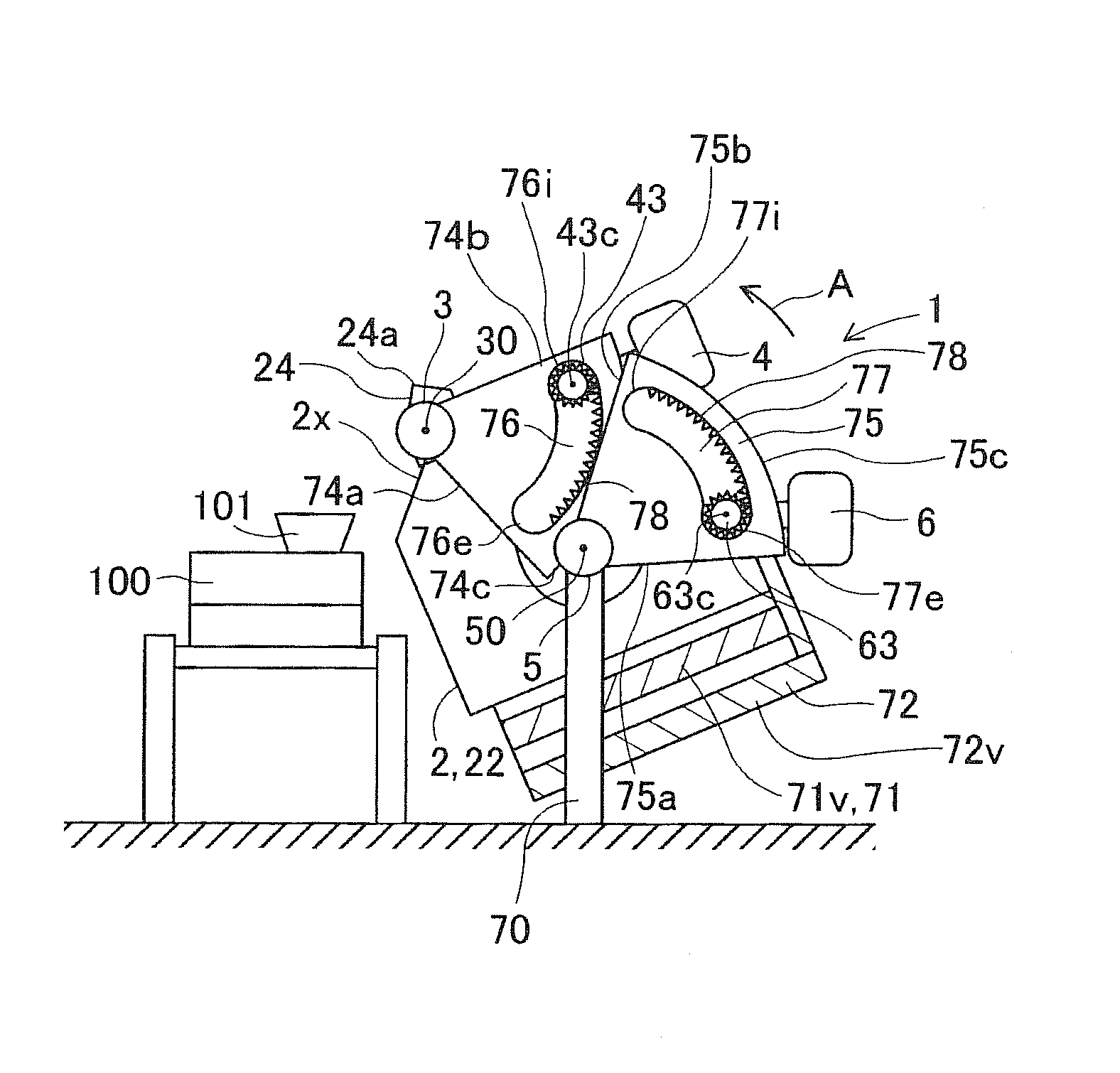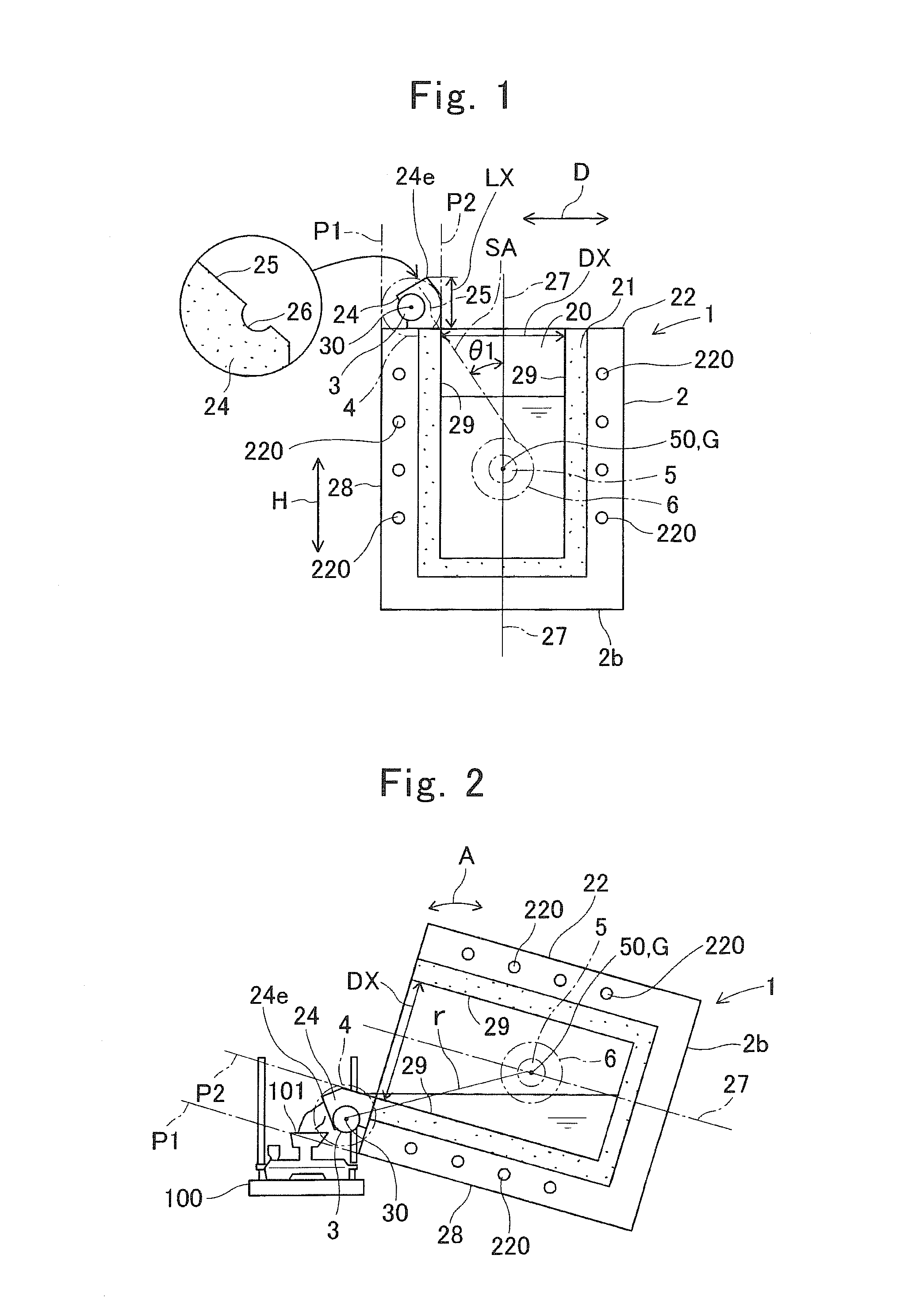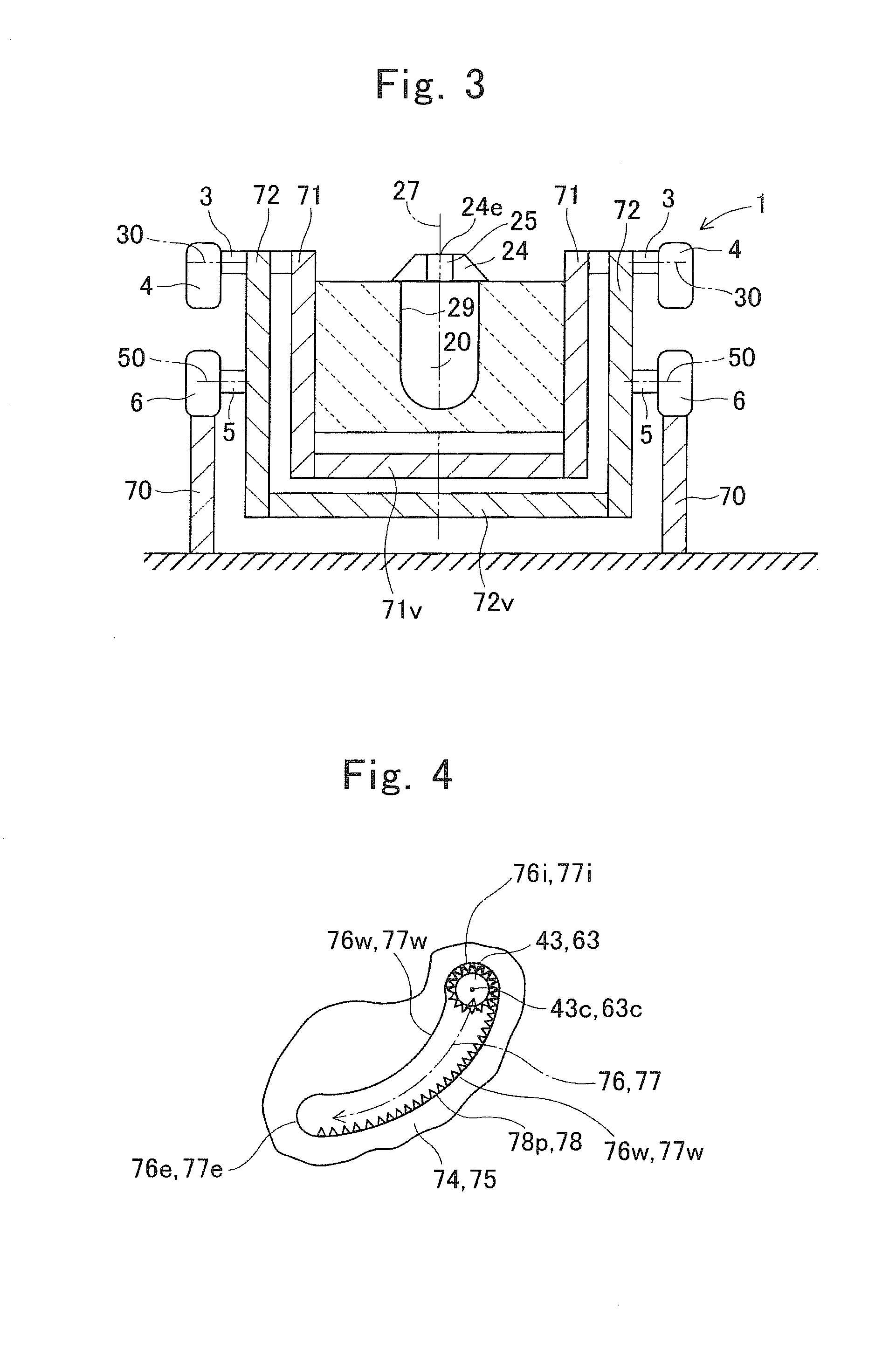Cast-steel pouring apparatus
a technology of pouring apparatus and cast steel, which is applied in the direction of casting apparatus, melt-holding vessels, manufacturing tools, etc., can solve the problems of shortening casting time and difficult operation, and achieve the effect of reducing fluctuations, and efficiently causing molten steel to discharg
- Summary
- Abstract
- Description
- Claims
- Application Information
AI Technical Summary
Benefits of technology
Problems solved by technology
Method used
Image
Examples
Embodiment Construction
[0046]In a standby state where a furnace body is put in place so as to make the center line of the furnace body orient along the vertical direction, a first axial line of a first pivot shaft is positioned on a more diametrically inner side than is a first imaginary extension line of an outer-circumference wall face in a furnace-body main body, and is positioned on a more diametrically outer side than is a second imaginary extension line of an inner-circumference wall face in a fire-retardant lining material that the furnace-body main body has. In addition, a steel-outing leading end of a steel-outing trough unit is positioned on a more diametrically inner side than is the first imaginary axial line of the outer-circumference wall face in the furnace-body main body, and is positioned on a more diametrically outer side than is the second imaginary extension line of the inner-circumference wall face in the fire-retardant lining material that the furnace-body main body has. The furnace ...
PUM
| Property | Measurement | Unit |
|---|---|---|
| diameter | aaaaa | aaaaa |
| time | aaaaa | aaaaa |
| distance | aaaaa | aaaaa |
Abstract
Description
Claims
Application Information
 Login to View More
Login to View More - R&D
- Intellectual Property
- Life Sciences
- Materials
- Tech Scout
- Unparalleled Data Quality
- Higher Quality Content
- 60% Fewer Hallucinations
Browse by: Latest US Patents, China's latest patents, Technical Efficacy Thesaurus, Application Domain, Technology Topic, Popular Technical Reports.
© 2025 PatSnap. All rights reserved.Legal|Privacy policy|Modern Slavery Act Transparency Statement|Sitemap|About US| Contact US: help@patsnap.com



